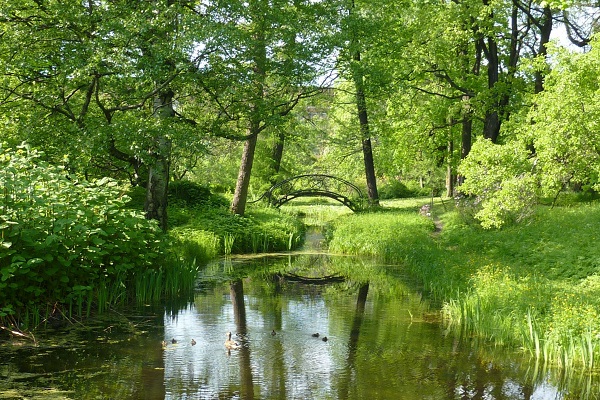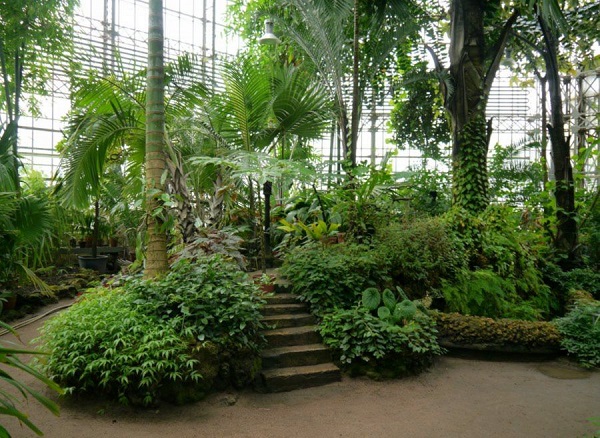Address: St. Petersburg, ul. Professora Popova, 2
Metro: Petrogradskaya
St. Petersburg Botanical Garden
Petersburgers have always suffered from a lack of greenery and bright colors. That is why sovereign Peter I, in 1714, ordered the Aptekarsky garden/Aptekarsky Ogorod to be broken up on Voronim Island, which became one of the first botanical gardens in the Russian Empire.
"Aptekarskim" was called because there they grew not only ornamental, but also medicinal plants. By the time of Catherine II, the garden area, together with the arboretum, reached 27 hectares. In the park was built a large house, given to the family of Professor of Botany. The scientist was assigned to monitor the garden.
During the years of its existence, the Botanichesky garden/Botanichesky Sad experienced periods of prosperity and decline. For example, in 1823, due to low funding, the object was almost closed. Many rare plants died, greenhouses became overgrown with weeds. This continued until Emperor Alexander I did not pay attention to the deplorable state of the garden. The king assigned a new name to the object - the Imperial Botanical Garden/Imperatorsky Botanichesky Sad and allocated a huge amount of state treasury for its improvement.
Since then, the main activity of the garden has become a science. The largest library of biological and zoological books in the empire was built on the territory of the park. In the greenhouses gardeners planted hundreds of names of rare plants and flowers. Petersburg botany students came to the garden for practical exercises. The financial condition of the Botanichesky Sad has improved so much that the institution was able to equip its own expeditions to different countries of the world.
The development of the garden continued in the 20th century, after the Soviet government transferred the object to the Komarov Botanical Institute.
The years of the Great Patriotic War were one of the most glorious pages in the history of the Botanical Sad of the BIN RAN. The staff of the institution showed genuine heroism: in a brutal winter, under constant German bombing, she saved the rarest plants from destruction. After the Second World War began a large-scale reconstruction of the garden.
In our time, the Botanichesky Sad of the BIN RAN is one of the most important scientific, educational and cultural institutions of St. Petersburg. The total area of greenhouses is 1 hectare, arboretum - 16 hectares.
Tourists will be able to see plants from various parts of the world in the garden: tropical flowers, Mexican cacti as large as human growth, dwarf subarctic birch trees, etc.
South American water lilies swim in the pond on the territory of the arboretum: they are so huge and durable that they can bear the weight of a child.
In the days of flowering of camellias, it is a great pleasure for guests to take a walk through a subtropical greenhouse.
Botanichesky Sad BIN RAN - a venue for exhibitions, lectures, master classes, theater performances and concerts.
One of the most important events of the Botanichesky Sad of the BIN RAN is the “Blockade Week”. From January 20 to January 31, tourists coming to the park will be able to find out how the hungry garden staff, themselves on the verge of life and death, saved the plants from death. Silent witnesses of those events - cacti, palm trees, rare bushes - have survived to our times.
In winter, hundreds of Petersburgers come here to celebrate Christmas in a tropical setting. Interesting events are held in the Botanichesky Sad and on St. Valentine's Day, and on the Museum Night, the Botanichesky Sad is one of the leaders in terms of the number of visitors. But the most popular among tourists are flower exhibitions: tulips, succulents, snowdrops, lilies, phloxes, peonies, gladioli.
Every year from May 14 to 15, the Sakura Festival takes place in the Botanichesky Sad. Tourists waiting for the clouds of white, red and pink flowers, the incredible smell of cherry pollen, concerts, theatrical performances in the Japanese style.
In total, the park has five main zones: a garden of tropical plants, a garden of subtropical plants, an arboretum, palm tree greenhouse, aquatic plant greenhouse.
St. Petersburg Botanical Garden can be visited as a part of a city tour.
Read more
- How to travel in Saint Petersburg without living your home
- Four of the ten best restaurants in the country are in St. Petersburg
- The first Holocaust museum in St. Petersburg
- A scientist from St. Petersburg created the biochronicle of Peter the Great.
- 10 interesting facts about Saint-Petersburg streets







